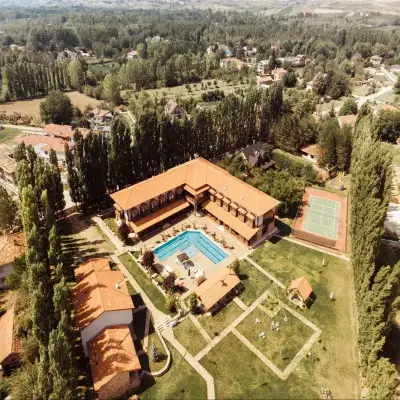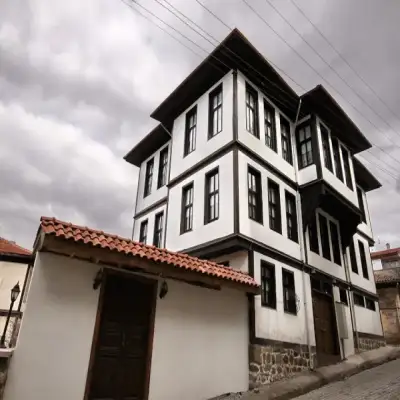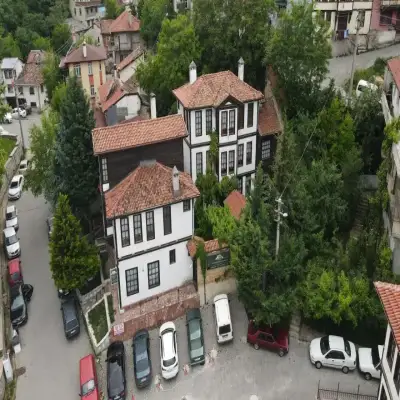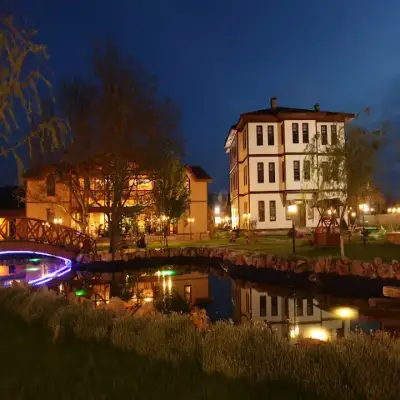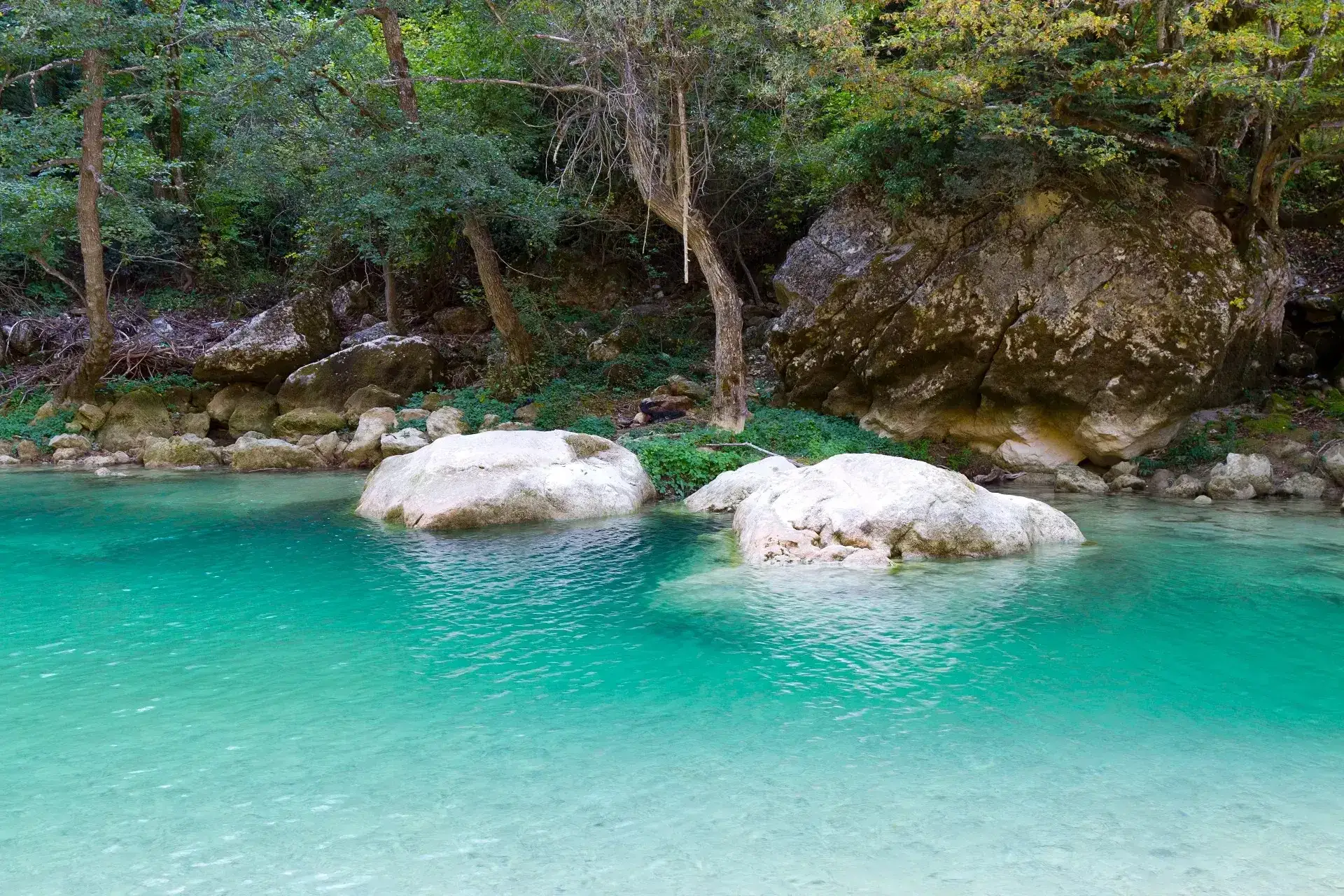
Kastamonu Hotels
FAQs
Known as the city where the Dress and Hat Revolution was held, Kastamonu has very few old mansions left from the Ottoman times. Since the center of the city is subjected to concretization, we will mostly visit and compile the surroundings of Kastamonu in this article. In Kastamonu, which is the choice of holidaymakers with its white cover in winter and lush green nature in summer, the operators of the hotels try to please their guests with their friendly and quality services. While walking around the bazaar, you should buy hand embroidery from local women and visit the inns and baths from the old times. You should spend at least one day in Kastamonu and take plenty of photos during your walks in the city and in nature. If you have decided to spend your holiday in Kastamonu, which experiences its most beautiful times in the fall and winter seasons, you will be surprised how affordable the prices of Kastamonu hotels are.
When is the Best Time to Visit Kastamonu?
Summer months are the most popular time to visit Kastamonu. During this period, the weather is typically warm and sunny, making it ideal for outdoor activities and nature exploration. It's also a great time for swimming and enjoying the cool waters of the Black Sea. Spring is another wonderful time to visit, as the weather is mild, and nature comes to life. It's perfect for hiking, visiting waterfalls, and observing wildlife. Fall is when Kastamonu's natural colors are at their best, with the leaves turning red, yellow, and orange. This time is great for nature walks and photography. Winter in Kastamonu can be cold and snowy, but it is perfect for winter sports. The region’s ski resorts offer excellent opportunities for skiing, snowboarding, and tobogganing.
How to Get to Kastamonu?
If you're traveling by bus, there are many bus services to Kastamonu from various cities. If you're driving, here are some distances:
- Bartın to Kastamonu is about 185 kilometers, taking around 3 hours.
- Zonguldak to Kastamonu is approximately 220 kilometers, around 3.5 hours.
- Ankara to Kastamonu is about 250 kilometers, taking 4 hours.
- Istanbul to Kastamonu is approximately 520 kilometers, a 6-hour and 20-minute drive.
- Bursa to Kastamonu is about 540 kilometers, taking 6.5 hours.
- Must-See Places in Kastamonu
Kastamonu is home to many historical landmarks and ancient sites. Upon entering the city, you'll first encounter the Kastamonu Castle, which dates back to the 12th century and was restored in 2005. From the castle, you can enjoy a panoramic view of the city. You can also visit the Zımbıllı Tepe Mound (Pompeipolis), an ancient city founded by the Romans in 64 BC as the capital of Paphlagonia province, where many artifacts and mosaics have been discovered.
Kastamonu is known for its many mosques, some dating back to the Seljuk, Beylik, and Ottoman periods. The Nasrullah Mosque (the first place where Mehmet Akif recited the Turkish National Anthem), Atabey Mosque, Mahmut Bey Mosque, İbni Neccar Mosque, and İsmail Bey Complex are just a few examples.
The city also boasts many historic inns such as İsmail Bey, Deve, Urgan, and Gökçeağaç Inns. You can visit the Kastamonu Archaeology and Ethnography Museums and explore the traditional Kastamonu houses in neighborhoods like Taşköprü, İnebolu, and Abana. For nature lovers, there are protected urban sites and national parks like Ilgaz and Küre Mountains National Parks.
Kastamonu is famous for its Black Sea plateaus, and there are many plateaus you can visit for clean air and rejuvenation. You can also explore the caves in Pınarbaşı and Küre districts, or visit the Gideros Bay, a peaceful paradise with a long shoreline and clear waters. The Horma Canyon is another must-see, with its deep lakes, waterfalls, and natural beauty. The Ilıca Waterfall, about 2 hours from Kastamonu city center via rural roads, offers stunning views.
Shopping Suggestions in Kastamonu
Kastamonu Lokum and Helva: Kastamonu’s famous local delights include traditional lokum (Turkish delight) and helva. You can treat yourself or buy some as souvenirs from local shops.
Stone and Woodcrafts: Kastamonu is renowned for its craftsmanship, particularly stone and woodwork. You can find unique, hand-made pieces like rosaries, decorative items, natural stones, and wooden carvings.
Kastamonu Knives: Kastamonu is famous for its skilled knife makers. You can purchase high-quality and uniquely designed knives from local workshops.
Handwoven Products: You can find handwoven kilims, carpets, and textiles with traditional patterns and colors in the villages around Kastamonu. These are great for adding character to your home.
Local Food Products: You can buy local cheeses, jams, sauces, honey, and organic agricultural products in Kastamonu from local markets or specialty food shops.
Entertainment Recommendations in Kastamonu
Visit Kastamonu Castle and Historical Sites: To discover the city's history, visiting the Kastamonu Castle and surrounding historical sites is a must. The castle offers a beautiful view and a chance to learn about the city's past.
Waterfall Visits: Kastamonu is home to many stunning waterfalls such as the Vallaş Canyon Waterfall, Ilıca Waterfall, and Pınarbaşı Waterfall, perfect for nature lovers.
Nature Walks and Trekking: Kastamonu’s natural beauty and hiking routes provide an excellent opportunity for trekking and exploring forests, plateaus, and riverbanks.
Cultural Events and Festivals: Kastamonu hosts various cultural events and festivals throughout the year, offering a chance to experience local music, dance, and exhibitions.
History of Kastamonu
Kastamonu and its surroundings have been home to various ancient civilizations, including the Hittites, Phrygians, and Lydians. The area features archaeological remains from these ancient times. Kastamonu became part of the Roman Empire and later the Byzantine Empire, benefiting from its strategic location on important trade routes. The city came under the control of the Seljuk Turks in the 11th and 12th centuries, becoming a significant cultural and commercial center. During the Ottoman period, Kastamonu developed further and became a prosperous settlement. Since the founding of the Turkish Republic, the city has continued to thrive while preserving its cultural heritage.
What is Kastamonu Famous For?
Stone and Woodcrafts: Kastamonu is known for its traditional craftsmanship, particularly stone and woodwork, with skilled artisans producing unique and beautifully crafted items.
Kastamonu Houses: The city is famous for its traditional Ottoman-era houses and wooden mansions, which preserve the city's historical character.
Kastamonu Cheese: Kastamonu is known for its high-quality cheeses, especially Kastamonu Gruyere and Kastamonu Tulum Cheese.
Kastamonu Cuisine: The city's cuisine is rich in local dishes such as Kastamonu meatballs, etli ekmek (meat flatbread), pastirma (cured beef), çekme helva (pulled helva), and many other regional specialties.
Taşköprü: This iconic bridge, built in the 12th century, symbolizes the city's rich history.
Kastamonu Waterfalls: The city and its surroundings are home to several picturesque waterfalls, such as Ilıca, Vallaş, and Pınarbaşı Waterfalls.
Where to Swim in Kastamonu?
As Kastamonu is located inland, it doesn’t have a coastline. However, you can visit nearby beaches in the Black Sea region for swimming.
What to Do in Kastamonu?
If you’re visiting in summer, enjoy the long beaches and spend time by the sea. If you’re traveling in winter, you can ski in the Ilgaz and Küre mountains. Kastamonu is beautiful year-round.
Ilgaz Mountain: It’s a great spot for birdwatching, hiking, and relaxing in nature.
Küre and Ilgaz Mountains National Parks: Explore these natural wonders, visit caves, and enjoy the fresh air.
Horma Canyon: Known for its stunning landscapes, this canyon is perfect for hiking and photography.
Horseback Riding: In Daday, you can enjoy a horseback ride through nature.
Cycling: You can also bike around Kastamonu to explore the city’s history and nature.
Historical Sites: Visit the city’s historic mosques, inns, and other cultural sites. Shopping in the central bazaar is another great way to experience the city.
Food and Drink Recommendations in Kastamonu
Kastamonu’s cuisine is influenced by its rich history and natural resources. The region is known for producing high-quality garlic and a variety of delicious dishes. Some must-try local dishes include mancar (a savory vegetable dish), etli ekmek (meat flatbread), ekşili pilav (sour rice), tarhana soup, and various regional desserts such as çekme helva and cırık tatlısı. You should definitely try Tirit and Banduma at Münire Sultan Sofrası, or enjoy local delicacies at Uğurlu Konakları for a more comfortable and upscale dining experience.



